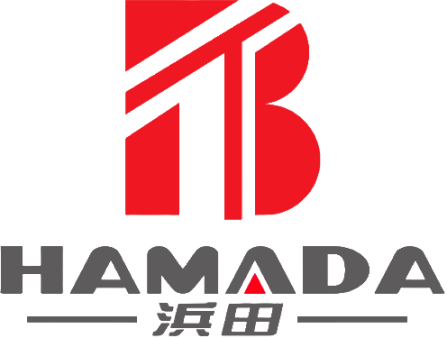What is the Function of a Planetary Gearbox?
What is the Function of a Planetary Gearbox
A planetary gearbox, also known as an epicyclic gearbox, is a sophisticated mechanical system widely used in applications requiring high torque, compactness, and efficiency. Its function is to reduce the input speed while increasing the output torque, making it a crucial component in various industries, from automotive to robotics. In this article, we’ll explore the primary function of a planetary gearbox and its key advantages.
Understanding the Planetary Gearbox Design
The unique design of a planetary gearbox sets it apart from traditional gearboxes. It consists of three main components: the sun gear, the planet gears, and the annular (or ring) gear. The sun gear is the central gear, while the planet gears are arranged around it and rotate within the annular gear. This structure allows for efficient torque distribution across multiple gears, making it highly durable and capable of handling high loads.
Primary Function: Speed Reduction and Torque Increase
The primary function of a planetary gearbox is to reduce the input speed and increase the output torque. By adjusting the gear ratios between the sun, planet, and annular gears, the planetary gearbox can convert a high-speed input into a slower, more powerful output. This makes it ideal for applications where high torque is needed at lower speeds, such as in electric vehicles, industrial machinery, and robotics.
The planetary gearbox achieves this by distributing the load across multiple gears, which reduces friction and ensures smooth operation. This ability to handle higher loads and distribute power efficiently makes it more durable than traditional gearboxes, which tend to wear out more quickly under heavy load conditions.
Advantages of a Planetary Gearbox
Compact Design: One of the key benefits of a planetary gearbox is its compact design. Unlike traditional gear systems, which may require larger, bulkier components, the planetary gearbox achieves high torque output in a relatively small package. This makes it ideal for space-constrained applications.
Efficiency: Because the load is distributed evenly across multiple gears, planetary gearboxes are known for their high efficiency and low energy loss. This is particularly important in energy-sensitive applications like electric vehicles and renewable energy systems.
Durability: Planetary gearboxes are highly durable and can withstand heavy loads and harsh environments. Their ability to operate with minimal wear and tear translates into longer service life and reduced maintenance costs.
Versatility: Planetary gearboxes are incredibly versatile, offering a wide range of gear ratios to meet specific speed and torque requirements. They can be customized for use in various industries, from automotive to robotics to industrial automation.
In summary, the function of a planetary gearbox is to provide efficient speed reduction and torque multiplication in a compact, durable, and versatile design. This makes it an essential component in many high-performance applications, offering superior efficiency, longevity, and reliability. Whether it's in electric drivetrains, robotics, or industrial machines, the planetary gearbox continues to play a vital role in driving innovation and performance across various industries.
 English
English Español
Español Português
Português русский
русский français
français 日本語
日本語 Deutsch
Deutsch Tiếng Việt
Tiếng Việt Italiano
Italiano Nederlands
Nederlands ไทย
ไทย Polski
Polski 한국어
한국어 Svenska
Svenska magyar
magyar Malay
Malay বাংলা
বাংলা Dansk
Dansk Suomi
Suomi हिन्दी
हिन्दी Pilipino
Pilipino Türk
Türk Gaeilge
Gaeilge عربى
عربى Indonesia
Indonesia norsk
norsk اردو
اردو čeština
čeština Ελληνικά
Ελληνικά Українська
Українська Javanese
Javanese فارسی
فارسی தமிழ்
தமிழ் తెలుగు
తెలుగు नेपाली
नेपाली Burmese
Burmese български
български ລາວ
ລາວ Latine
Latine Қазақ
Қазақ Euskal
Euskal Azərbaycan
Azərbaycan slovenský
slovenský Македонски
Македонски Lietuvos
Lietuvos Eesti Keel
Eesti Keel Română
Română Slovenski
Slovenski मराठी
मराठी Српски
Српски
Analysis of Harmonic Drive Harmonic Drive Gearbox Applications in the Global Semiconductor Cleaning Equipment Market
In the semiconductor manufacturing industry, cleaning equipment, as a critical link in wafer processing, places extremely stringent requirements on the precision and reliability of its transmission systems.
Read MoreHigh-Precision Applications of Harmonic Drive Harmonic Gear Reducers in Semiconductor Polishing Equipment
In the front-end processes of semiconductor manufacturing, chemical mechanical planarization (CMP) polishing equipment places extremely stringent requirements on the precision and reliability of transmission components.
Read MoreAnalysis of Harmonic Drive Harmonic Drive Gearboxes' Global Market Application in Laser Processing Centers
In the field of laser processing equipment, high-precision transmission systems are a core element ensuring processing quality. Harmonic Drive harmonic drive gearboxes, with their unique technological advantages, have become a key component of transmission systems in laser processing centers worldwide.
Read More